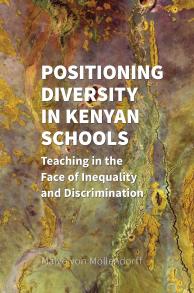Livrel 292p.
(Education)
ISBN: 9781928502340
Education is considered key for societies to achieve greater social cohesion and equality. Yet, schools, as the main providers of formal education, have increasingly come into question concerning their role in manifesting and perpetuating social categorisations, inequalities and discrimination instead of decreasing existing fragmentations and challenging power relations and hierarchies.
As a diverse society, Kenya is faced with power struggles and rivalries between different groups - for instance, along ethnic lines, often constructed deep in colonial history. This affects teaching and learning in school and the result is that Kenya is faced with vast disparities in terms of educational access and success - rendering some social groups marginalised and others favoured.
Positioning Diversity at Kenyan Schools explores the ways in which teachers in Kenyan primary and secondary schools experience and deal with social categorisations and diversity in terms of ethnicity, gender, wealth, culture, religion, etc. in their professional practice and in the current education system. Using critical pedagogy and diversity theory as a lens for positioning diversity in Kenyan schools, the questions that this book sets out to answer are: In what ways do the teachers' and schools' practices lead to transformation in terms of more social equality and less discrimination? In what ways do the practices manifest existing group categorisations, hierarchies and discrimination? How can schools and teaching practices in postcolonial Kenya become more inclusive and foster social cohesion and equality?








